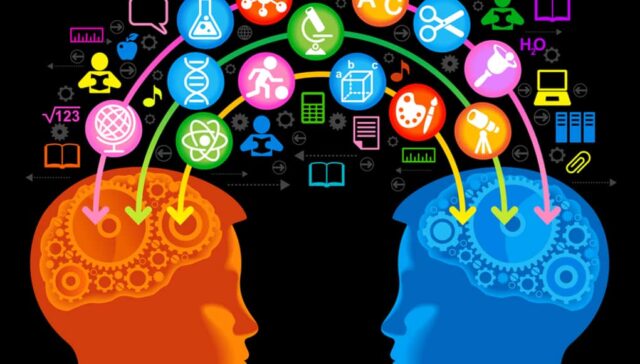
Exponential learning is a paradigm shift in the way we approach acquiring knowledge. Rather than thinking of learning as a linear path, where we simply add new information to what we already know, exponential learning harnesses the compounding nature of knowledge.
It’s the belief that as we learn, each new piece of information interacts with what we already know, leading to faster and more profound understanding. Imagine each new piece of information as a playful Gizmo, ready to join the ever-growing orchestra of knowledge within our minds.
This article delves into actionable strategies that students can employ to harness the power of exponential learning.
Exponential Learner’s Mindset

Mindset plays a pivotal role in one’s learning journey. To truly tap into this type of learning, one must develop certain mental attitudes and beliefs.
Embrace the Growth Mindset!
Developed by psychologist Carol Dweck, the growth mindset is the belief that our abilities and intelligence can be developed through dedication and hard work. This mindset is fundamental for exponential learning.
When students believe they can grow and improve, they’re more likely to embrace challenges, persevere through setbacks, and see effort as a path to mastery. This tenacity and resilience are vital for building the interconnected web of knowledge characteristic of exponential learning.
The Power of Curiosity
Curiosity is the engine that drives exponential learning. When students are genuinely curious about a topic, they’re more likely to explore it deeply, seek connections to other knowledge, and engage with it on multiple levels.
Encouraging curiosity means going beyond rote memorization. It means fostering a love for questions, exploration, and discovery. When students approach learning with an insatiable curiosity, they’re not just consuming information—they’re weaving it into a vast tapestry of understanding.
Practical Techniques
Harnessing exponential learning requires actionable steps.

Active Recall: Testing as a Learning Tool
Often, we reread our notes or textbooks, mistaking recognition for knowledge. Active recall involves testing oneself without looking at the material, ensuring genuine understanding. This method has been shown to substantially improve retention.
By regularly engaging in active recall, students not only ensure they understand the material but also strengthen neural connections, making it easier to build upon that knowledge in the future.
Mind Mapping: Visualizing Connections
Mind maps are visual representations of information, showcasing how various pieces of knowledge are interconnected. By creating mind maps, students can see the bigger picture, identifying how new information relates to what they already know. This method encourages the creation of a web of understanding, which is the cornerstone of exponential learning.
Interleaved Practice

Rather than focusing on one topic or skill until it’s mastered, interleaved practice involves alternating between different topics or skills during study sessions. This method promotes the brain’s ability to differentiate between concepts and has been shown to improve long-term retention and transfer of skills.
Benefits of Interleaving
Interleaving improves the brain’s ability to differentiate between similar concepts. By constantly switching between topics, students become adept at identifying the nuances that distinguish them. It also prevents mental stagnation, keeping the learning process engaging and challenging.
How to Implement Interleaved Practice?
Instead of dedicating an entire study session to a single topic, divide your time among several related or contrasting topics. For instance, if you’re studying mathematics, you might switch between algebra and statistics, and geometry in one session.
Metacognitive Strategies
Metacognition refers to “thinking about thinking.” It involves awareness and understanding of one’s learning processes. By regularly evaluating and adjusting one’s approach to studying, students can enhance their learning outcomes.
Self-assessment and Reflection
After a study session, take a moment to reflect on what went well and what could be improved. Did a certain strategy enhance your understanding? Were there topics that remained unclear? By constantly assessing one’s performance and making adjustments, students can ensure continuous growth.
Set Clear Goals!
Having clear, measurable goals helps direct the learning process. Break down large goals into smaller, achievable tasks. Celebrate milestones and adjust goals as needed. A clear roadmap keeps students motivated and provides direction.
Elaborative Integration

Go beyond the surface of what you’re learning. Look for ways to connect new information to existing knowledge or to other new pieces of information.
Ask the “Why” and “How”
Whenever you encounter new information, ask yourself “Why does this matter?” or “How does this work?” Probing deeper reinforces memory and encourages a more profound understanding of the material.
Teach Others
Imparting knowledge is a powerful way to consolidate one’s understanding. After studying a concept, try explaining it to someone else. This not only identifies gaps in understanding but also reinforces what you know.
Multisensory Learning
Leverage more than one sense while studying. By doing so, you create multiple avenues for your brain to retrieve information.
Use Visual Aids
Incorporate charts, diagrams, and infographics. Visualization can simplify complex concepts and provides a different perspective, aiding understanding.
Auditory Learning
Listen to podcasts, watch lectures, or even read your notes aloud. The auditory channel can complement visual learning, ensuring that the material is deeply ingrained.
The Role of Technology in Exponential Learning

In today’s digital age, technology plays an invaluable role in education. Leveraging technology can amplify the benefits of exponential learning, making the process more efficient and tailored.
Digital Spaced Repetition Systems (SRS)
Platforms like Anki or Quizlet leverage the science of spaced repetition. These tools remind students to review information just as they’re about to forget it, optimizing the memory consolidation process. Integrating SRS into one’s study routine can drastically enhance retention, ensuring that foundational knowledge is always strong, ready to be built upon.
Online Learning Communities
Platforms like Coursera, edX, and even dedicated forums allow learners to dive deep into subjects, ask questions, and engage in meaningful discussions. These communities foster a sense of collaboration and expose students to diverse perspectives, enriching their understanding.
By actively participating, students can further embed their knowledge and discover new areas to explore, feeding their exponential learning journey.
Potential Challenges
Like any approach, exponential learning has its hurdles. Recognizing and addressing these challenges is crucial for success.
The Danger of Information Overload
With so much information available, students can sometimes feel overwhelmed. It’s essential to discern what’s critical and what’s supplementary. Prioritizing core concepts and establishing a solid foundation before branching out ensures that the learning process remains effective and doesn’t become counterproductive.
Maintaining Consistency

Exponential learning relies on consistency. Regular engagement with material, active recall, and seeking connections are vital. Students must establish routines and remain disciplined to fully harness the power of this approach.
Whether it’s setting aside dedicated study times, joining study groups, or using productivity techniques like the Pomodoro Technique, maintaining consistency ensures that the exponential curve of learning continues to rise.
The Bottom Line
Incorporating these strategies will further enhance the exponential learning curve, allowing students to harness the full spectrum of their cognitive abilities. Every learner is unique, so it’s essential to find the combination of strategies that resonate most with one’s personal learning style.









